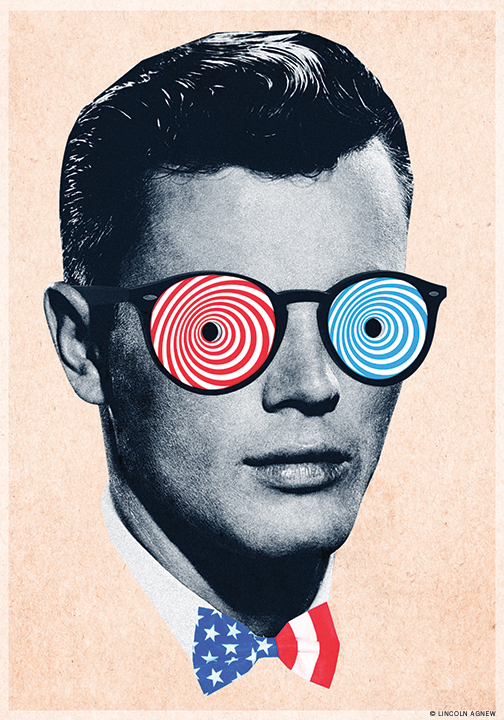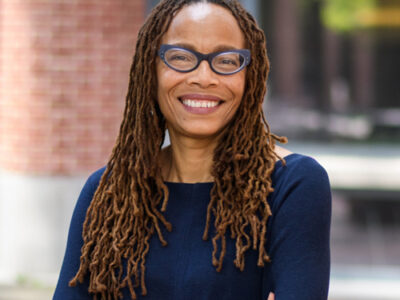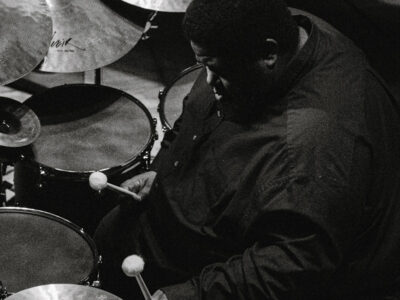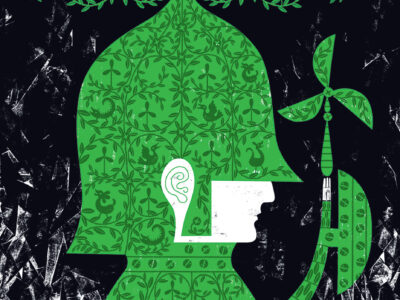
If any piece of conventional wisdom has gained further credence during this most unconventional presidential election campaign, it’s that the American general public is more politically polarized than ever. But is that really true? According to a new study by Matthew Levendusky, associate professor of political science, the electorate is indeed divided—but not nearly as drastically as voters believe it to be. Using surveys that compared voters’ personal positions on issues like immigration and the capital gains tax to their estimations of the positions of “typical” Democrats and Republicans, Levendusky and co-author Neil Malhotra, of Stanford University, found that “people significantly misperceive the public to be more divided along partisan lines than it is in reality.” And although respondents especially overrated the extremity of opposing partisans, they also overstated the ideological purity of members of their own party. Levendusky, who has written two books about partisan media and political polarization, spoke with the Gazette in September.
In your work, you make a distinction between political polarization and voter sorting. What’s the difference, and why does it matter?
Voter sorting means that people line up (more or less) on their party’s side of the aisle. So, for example, Democrats are generally pro-choice, and Republicans are generally pro-life. But that doesn’t mean that people have gone to the extremes. If you look at that same issue (abortion), most people today are pretty close to the middle. Rather than saying “abortion in any circumstances without restriction,” Democrats tend to say “abortion in most reasonable circumstances.” Likewise, most Republicans would not ban abortion in all circumstances, but rather support limited availability with some exceptions. People might take their party’s side of the issue, but they don’t necessarily go to the poles.
In your 2013 book How Partisan Media Polarize America , you argue that not only do partisan media outlets polarize the 2 or 3 million people who tune into them, but that they impact the far larger number of people—hundreds of millions—who don’t watch. How does that work?
Basically, imagine you watch Fox News and are very politically informed. You’ll then go to your friends and say, “Did you see this story on Obamacare! I can’t believe it!” So even if your friends don’t watch, they’ll still get some of the effects indirectly, by talking to you. So the effects spread through discussion and conversation. This is an especially important effect in today’s world, when everyone is networked on Facebook and other social media platforms, so the influence can spread even more widely.
How much of a problem does political polarization really represent? Aren’t there advantages of a two-party system with clear ideological differences between the parties? During the first half of the 20th century, for instance, the most vocal supporters of civil-rights bills in the Senate were Northern Democrats—who were repeatedly stymied by their Democratic colleagues from the South. How frustrating it must have been for a Northern liberal to vote for his state’s liberal Democratic candidate, knowing that it would also empower the segregationist Southern Democrats whose party seniority gave them all the leverage.
Great question. There are definitely two sides to the polarization coin: on the one hand, it generates gridlock, but on the other hand, it also helps give voters a clear choice between the parties. But as I’ve thought about and studied polarization for more than a decade now, I’ve come to think that we need a balance of polarization and moderation. Some polarization is a good thing, to give voters clear choices. But too much polarization leads to dysfunction. Sadly, that’s what we see in Washington today, where even vital government functions are threatened because of political gridlock and a failure to compromise. The sort of hyper-partisanship of today is, on balance, a net negative.
In your most recent paper, you conclude that Americans perceive the general public to be more polarized than it actually is. Is that good news, or bad, and why?
It’s both good and bad. It’s bad in that it reflects the media’s tendency to describe [the American] people as deeply divided, when that’s not necessarily the case. But it does open up an opportunity to try and correct that misinformation. One of the projects I’m currently working on is to try and understand if there are ways to overcome partisan animosity in the mass public. Possibly if we correct this sort of incorrect information, we might be able to reduce hostility among ordinary voters.
Do you think correcting misperceptions about the depth of polarization could lead to better governance, either by advantaging certain kinds of political candidates or changing the incentives that shape their behavior in office? Or has hostility among voters become so severe that reducing it is an end in itself?
It could change the incentives for politicians. We know from recent work that this sort of affective discord lowers trust in government and support for cross-party compromise. Without that sort of incentive for politicians, they have little reason to reach across the aisle: if the opposing party won’t support you for compromise, and it angers your most ardent supporters, what’s the logic behind compromising? But with lower levels of discord, there’s potentially more space for productive bipartisanship. —TP




